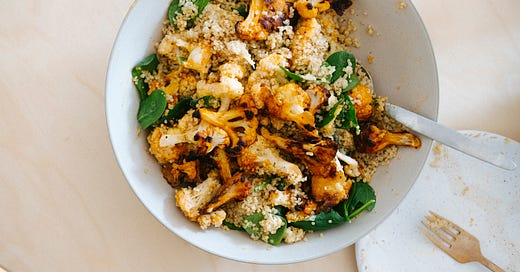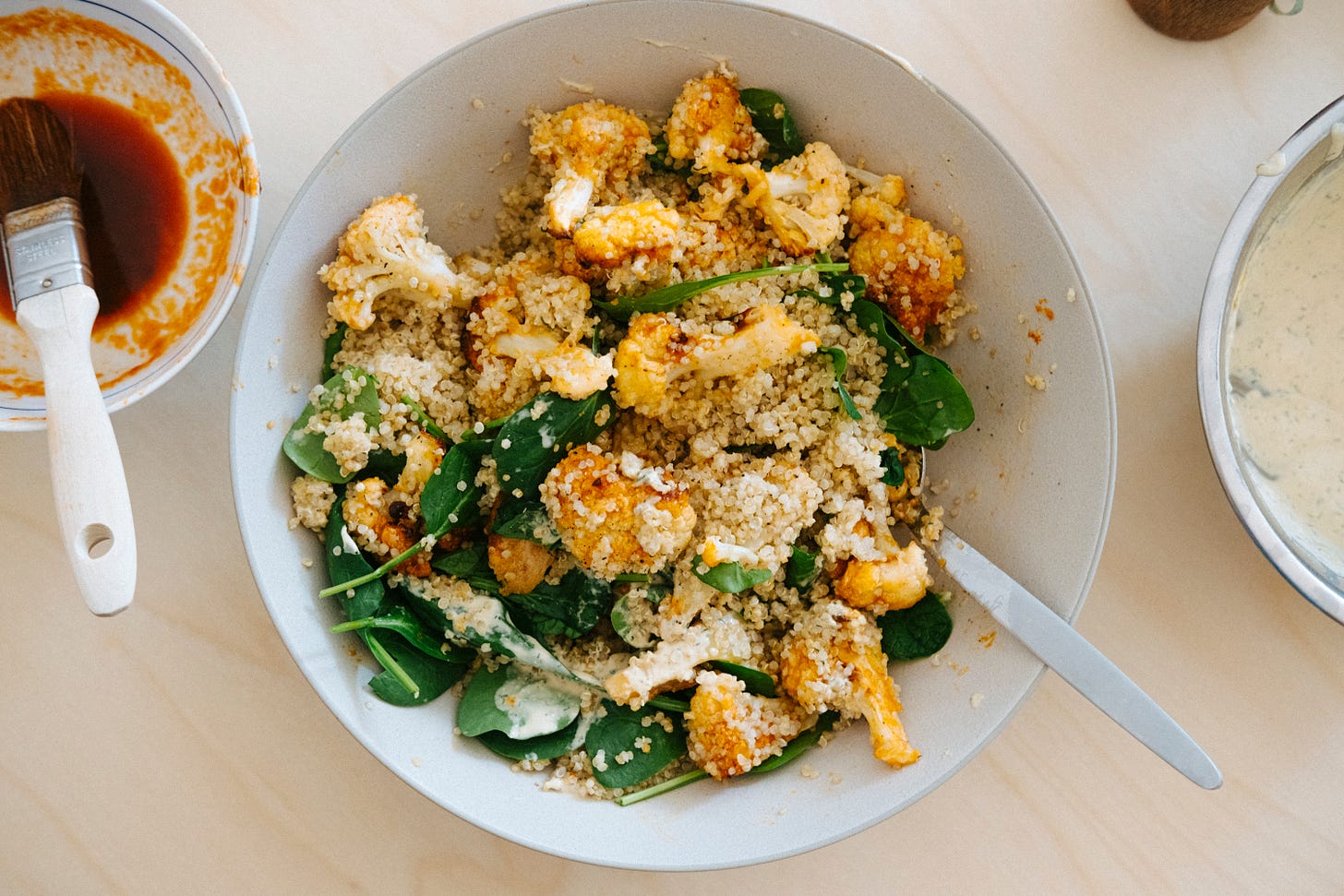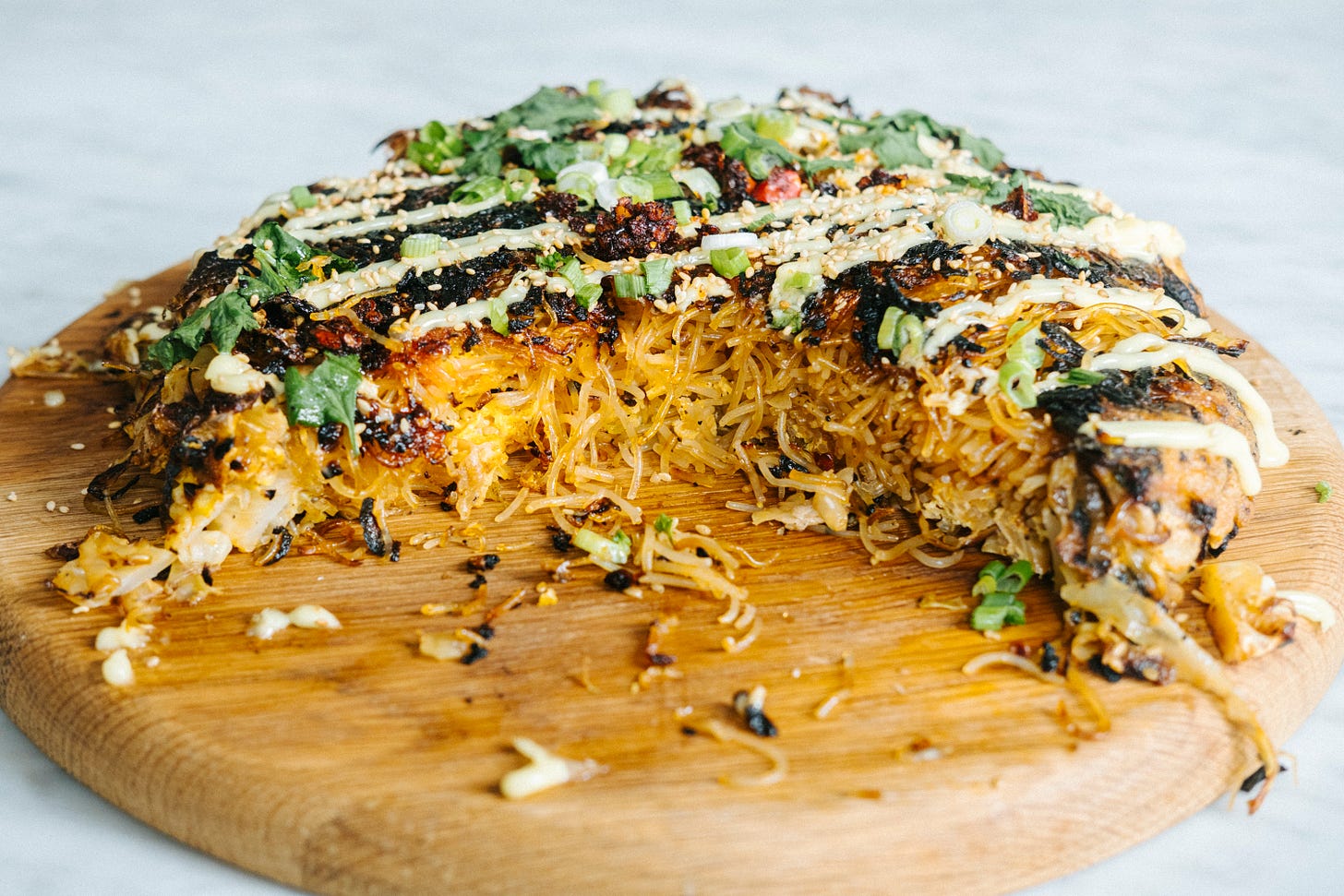Welcome to To Vegetables, With Love, a celebration of a vegetable life, less ordinary.
My book Tenderheart is available from Books are Magic, Kitchen, Arts and Letters, Book Larder, Bold Fork Books and also here or here.
I always believe in flavour first.
I was looking at a chilli recipe on a media website this week, and I noticed that all of the canned ingredients listed were the ‘no salt added’ variety. Home cooks may not realize this, but the ‘no salt’ or ‘low sodium’ variety of an item is often specified by the editors and not the recipe developer, in order for that recipe to have a lower salt count in the nutritional information that appears with the recipe. That way, a recipe appears more “nutritious”.
I am the first admit, I like salty food. I enjoy my food well-seasoned.
Seasoning makes or breaks a dish and it could be the single most important step in cooking a recipe. I am always suspicious of a recipe that does not list or mention salt or seasoning. I made a pasta e ceci recipe from a cookbook the other day, and there was no salt mentioned in the recipe. As expected, it was tasteless. I was forced to season to taste.
Season to taste. This is a phrase you see in a lot of recipes and, anecdotally, I’ve heard that it can confuse home cooks. An anti-cooking friend told me she has no idea what it means.
I am here to defend season to taste. In recipes, it serves a distinct purpose.
While I was a blanket season to taste recipe writer in my early days, I now operate with more methodology and intent. For the final flourish before serving, I will usually direct you to season to taste. But during the earlier steps, I will often specify exact salt quantities for dressings or sauces because it allows me to communicate how seasoned a dish should be. Even still, this is not an exact science. There are many types of salt on the market, each with their own level of saltiness; you will notice, that my recipes for NYT Cooking specify that I have tested with Diamond Crystal Kosher salt which is less salty than Morton’s kosher salt, and about half as salty as sea salt or table salt. These salty vagaries bring us back to season to taste - often, this is still the best and most accurate instruction because it encourages the home cook to engage in their food, to think about the seasoning, and importantly, to learn what they like. Learning to season a dish to our own particular taste, and having the confidence to do so, is a gift.
How to season to taste? It means taste your food, add a little salt (and pepper), mix, taste again. Is it still little bland? Keep tweaking in this way until it is delicious.
There is no rule to season to taste. So trust your palate.
As a note, for readers of my books and this newsletter, I usually test and develop with sea salt as I find it more consistent across brands and different countries.
COOK / EAT / SHARE
I wrote this personal essay for Bon Appetit for their Fourth Trimester column, which is dedicated to the meals that nourish us as new mothers. Being a “new mother” was a long time ago for me, so I didn’t expect to get so emotional when writing this piece. The essay is one of the favourite pieces I’ve ever written. Here is the accompanying ginger fried rice recipe.
Winter vibes: One pot kimchi and cheese mac and cheese, vegan pho, sheet pan gnocchi with chili crisp and baby bok choy.
Summer vibes: Lamington ice cream, roasted grapes with feta, chilled zucchini soup with lemon and basil (gift link), Bloody Mary tomato salad (gift link)
Cooking from Tenderheart: The brothy beans with kale dumplings is a family fave - this week, I subbed the cheese in the dumplings with a block of crumbled feta and I highly recommend. I also used chard instead of kale because I like mixing it up. Also on the menu this week is the walk away tomato sauce with pasta (perfect made with winter tomatoes, even better with peak summer ones) and the fennel and black olive fried rice.
THIS WEEK’S RECIPE
Sriracha cauliflower and quinoa salad with tahini ranch
© Hetty Lui McKinnon for To Vegetables, With Love
For this salad, I was inspired by buffalo cauliflower, the sweet and spicy bright crimson bites that are often served at bars as a drink snack. The signature of buffalo sauce is a very specific ingredient - Frank’s hot sauce. However, since this is an ingredient I wouldn’t use in my daily cooking, I looked for an alternative. I found it in sriracha.
As an accompaniment to food, sriracha is not my favourite type of hot sauce. I prefer less acidic chili oils. But when used in sauces and salad dressings, it absolutely shines. During the recent Huy Fong Foods sriracha (the only brand for me!) famine of the past few years, I held onto my half used bottle of sriracha tightly, using it sparingly in my cooking. I was not able to develop sriracha-forward recipes like this one. This week, after finally replenishing my fridge with a brand new bottle, I used the opportunity to cook a buffalo-esque cauliflower salad, with sriracha in place of Frank’s hot sauce. I think you’ll enjoy the results.
There are several elements involved in this salad. The cauliflower is dredged in batter, then roasted at high heat, then brushed with the sriracha glaze, and then roasted again. While that happens, you are cooking some quinoa and throwing together the tahini ranch dressing. For those who are short on time, or want a lower effort dish, you could skip the batter and simply roast the cauliflower, brushing on the glaze, before giving it a quick final roast. The cauliflower won’t be crispy and will lack some of the body of the battered variety, but it will still be good.
The sweetness of the cauliflower is balanced by the tanginess of the “ranch”. The tahini ranch is out of this world. It’s just delicious and I want to eat it with everything (tahini dressings are my favourite!). If you don’t have garlic and onion powder in your pantry and don’t wish to purchase it, skip it and just add 1 clove of grated garlic. Dill weed is also a dried herb which may not be used often enough to justify buying - I did buy it especially for this recipe, but that is because I wanted to add it to my spice and herb pantry; if you don’t, substitute it with another dried herb such as basil or even better, add 1 tablespoon of chopped fresh dill, parsley or scallions.
The rice flour and cornflour (cornstarch) batter delivers a light yet crisp coating. If you want, you could substitute the rice flour with plain (all-purpose) flour – the batter will be heavier but still good.
Serves 4-6
1 medium (about 900g / 2 pounds) cauliflower, cut into florets
extra virgin olive oil|
200g (1 cup) quinoa
Sea salt and black pepper
handful salad leaves such as spinach or rocket (arugula)
handful soft herbs such as mint, parsley, coriander (cilantro), scallions
Marinade
1/2 cup (40g) cornflour (cornstarch)
1/2 cup (65g) rice flour
½ - ¾ cup (120 – 180ml) milk of your choice (or water)
1/2 teaspoon garlic powder
1/2 teaspoon smoked paprika
sea salt and black pepper
Sriracha glaze
60ml 1/4 cup sriracha or other hot sauce
2 tablespoons maple syrup
1 tablespoon extra virgin olive oil
Tahini ranch
1/4 cup tahini
1/2 teaspoon garlic powder (see headnote)
1/2 teaspoon onion powder (see headnote)
1 teaspoon dill weed (optional) (see headnote)
2 tablespoons nutritional yeast (see headnote)
Juice of 1/2 lime or lemon
In a large mixing bowl, add the cornflour (cornstarch), rice flour, garlic powder, smoked paprika, 1 teaspoon of salt and season with black pepper. Add ½ cup of milk (or water) to start with and whisk to combine. Check consistency, it should be thick enough to coat the cauliflower but not gluey. Add another 2-3 tablespoons more of milk or water until you get the right consistency. Leave to rest for 5-10 minutes to thicken up further.
Preheat oven to 450˚F / 230˚C. Line a baking sheet with baking paper and drizzle with olive oil.
Add the cauliflower to the batter and toss well until thoroughly coated. Remove the cauliflower from the batter, tapping off the excess batter a few times on the side of the bowl, and arrange them onto the lined baking sheet. Drizzle with olive oil. Bake until it is lightly golden, 20-22 minutes.
Meanwhile, place the quinoa, along with 2 cups water and 1 teaspoon of salt into a medium pot. Bring to the boil, reduce heat to medium-low, cover and cook until the quinoa is translucent and tender, and the liquid has been absorbed, about 15 minutes. Allow the quinoa to cool in the pan for 5-10 minutes, to allow the quinoa to dry out.
In a small bowl, combine the sriracha or hot sauce, maple syrup and olive oil.
Remove the cauliflower from the oven. Very carefully (the sheet pan will be very hot), flip the cauliflower. Brush the cauliflower with the hot sauce mix and return to the oven for 10 minutes.
Meanwhile, combine the tahini, garlic powder, onion powder, dill weed, nutritional yeast and lime or lemon juice in a small bowl. Add 3 tablespoons of water and whisk until the tahini is smooth and pourable. If it is too thick, add another tablespoon or 2 of water until it’s the right consistency.
To serve, add the quinoa to a bowl, along with the cauliflower, salad leaves and herbs. Drizzle over the tahini ranch, season with sea salt and black pepper and toss well to combine. To serve, drizzle with a little olive oil.
BONUS SUBSCRIBER RECIPE
Here is the recipe for the cabbage and noodle pancake I wrote about in my last newsletter. This is a bonus recipe for paid subscribers.







